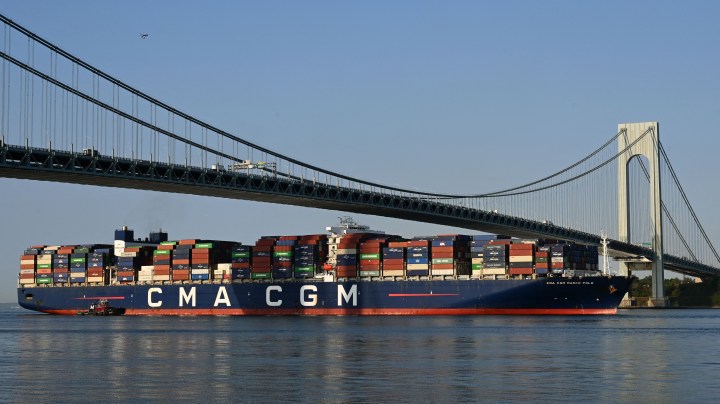
Import prices declined unexpectedly in August

Right now, price trends for imports and exports can shed light on one of the economic keywords of the day — inflation — and whether it’s here to stay or transitory.
The Bureau of Labor Statistics reported Wednesday morning that export prices rose 0.4% in August. That was less than their increases in May, June and July, and year over year, export prices were up nearly 17%.
Import prices actually fell in August by 0.3%, despite the fact that economists had expected an increase after import prices rose earlier in the summer. Year to year, import prices rose 9%.
So what’s that all telling us?
First, a caveat: Import-export prices can fluctuate from month to month — especially in these crazy, COVID-messed-up-my-global-supply-chain times. But looking over the past several months, it’s clear there has been a steady decline in import and export price inflation, said Cornell trade economist Eswar Prasad.
“These price data, both for consumer goods imports and machinery and equipment imports, stayed relatively flat,” Prasad said. “So one can think about these prices as a bellwether of where domestic inflation, or perhaps even worldwide inflation, might be going.”
What’s more, big U.S. industrial companies have been able to deal with what we’ve seen recently, which is a steep rise in prices for materials they import, like oil and steel.
“I don’t see the inflation as something that is going to cause horrific headwinds for these companies,” said CFRA analyst Elizabeth Vermillion, who covers big U.S. equipment exporters like Caterpillar and John Deere. “When the pandemic hit last year, a lot of companies cut costs so much that they’re better prepared financially to handle some of these inflationary spikes.”
So, that’s the good-news scenario: Inflation is moderating. It’s looking “transitory,” to quote Federal Reserve Chair Jerome Powell, and the economy’s handling it pretty well.
But there’s a not-so-good-news scenario too, Prasad said: Price inflation is slowing down because the global recovery is slowing down.
“We are seeing a softening of demand around the world, with China in particular, which is a big importer of commodities. And the delta variant is creating uncertainty about growth prospects,” he said.
For now, though, the slowdown in price inflation is welcome news, especially for consumers, according to Peter McNally at Third Bridge.
“A couple of key commodities have cooled off here — the agriculture stuff, corn and soy,” he said.
That could keep food prices down, making our breakfast cereal and sausage links a little more affordable later this year.
There’s a lot happening in the world. Through it all, Marketplace is here for you.
You rely on Marketplace to break down the world’s events and tell you how it affects you in a fact-based, approachable way. We rely on your financial support to keep making that possible.
Your donation today powers the independent journalism that you rely on. For just $5/month, you can help sustain Marketplace so we can keep reporting on the things that matter to you.

















